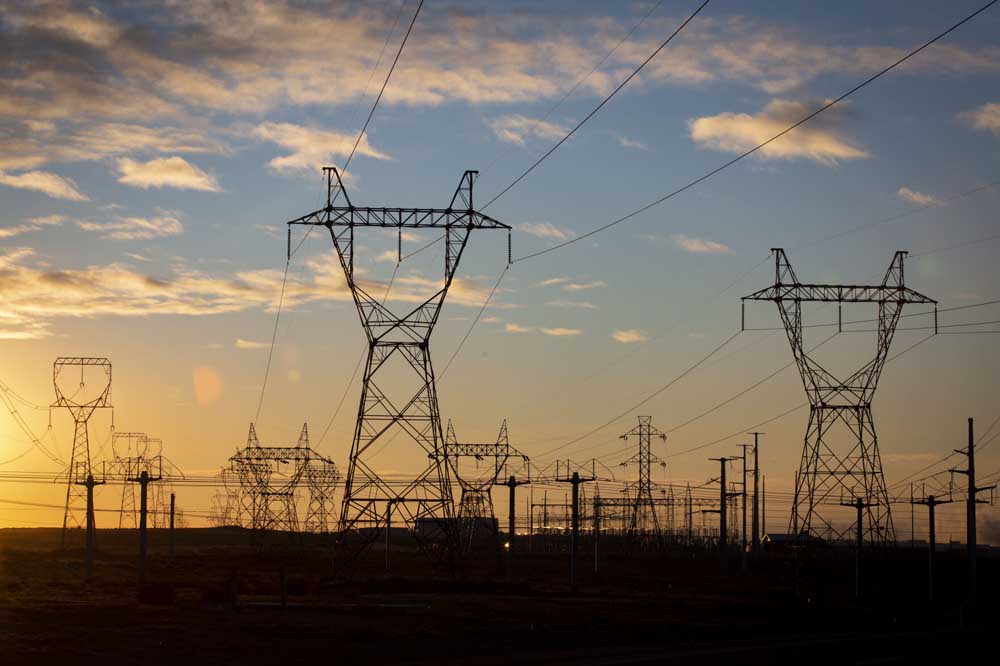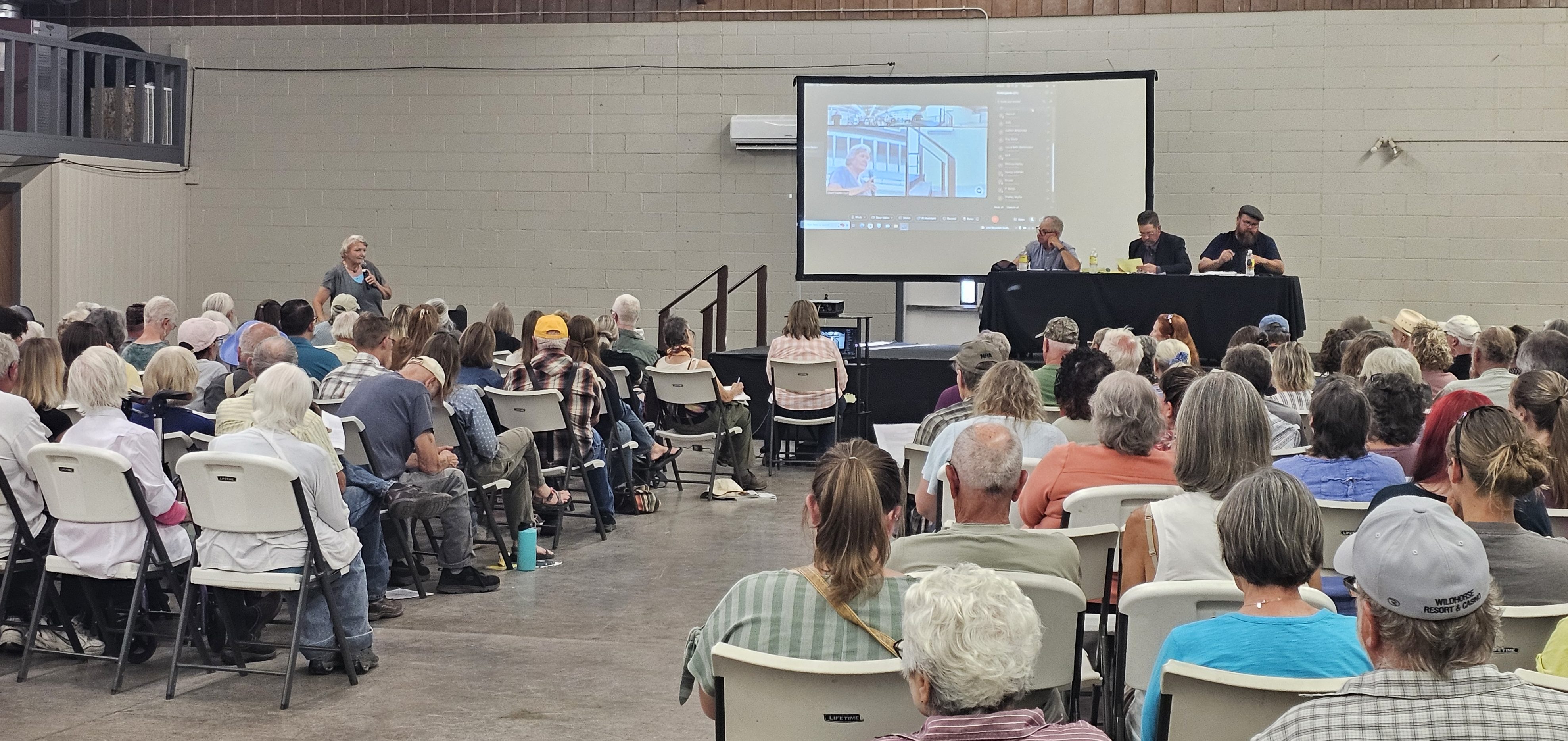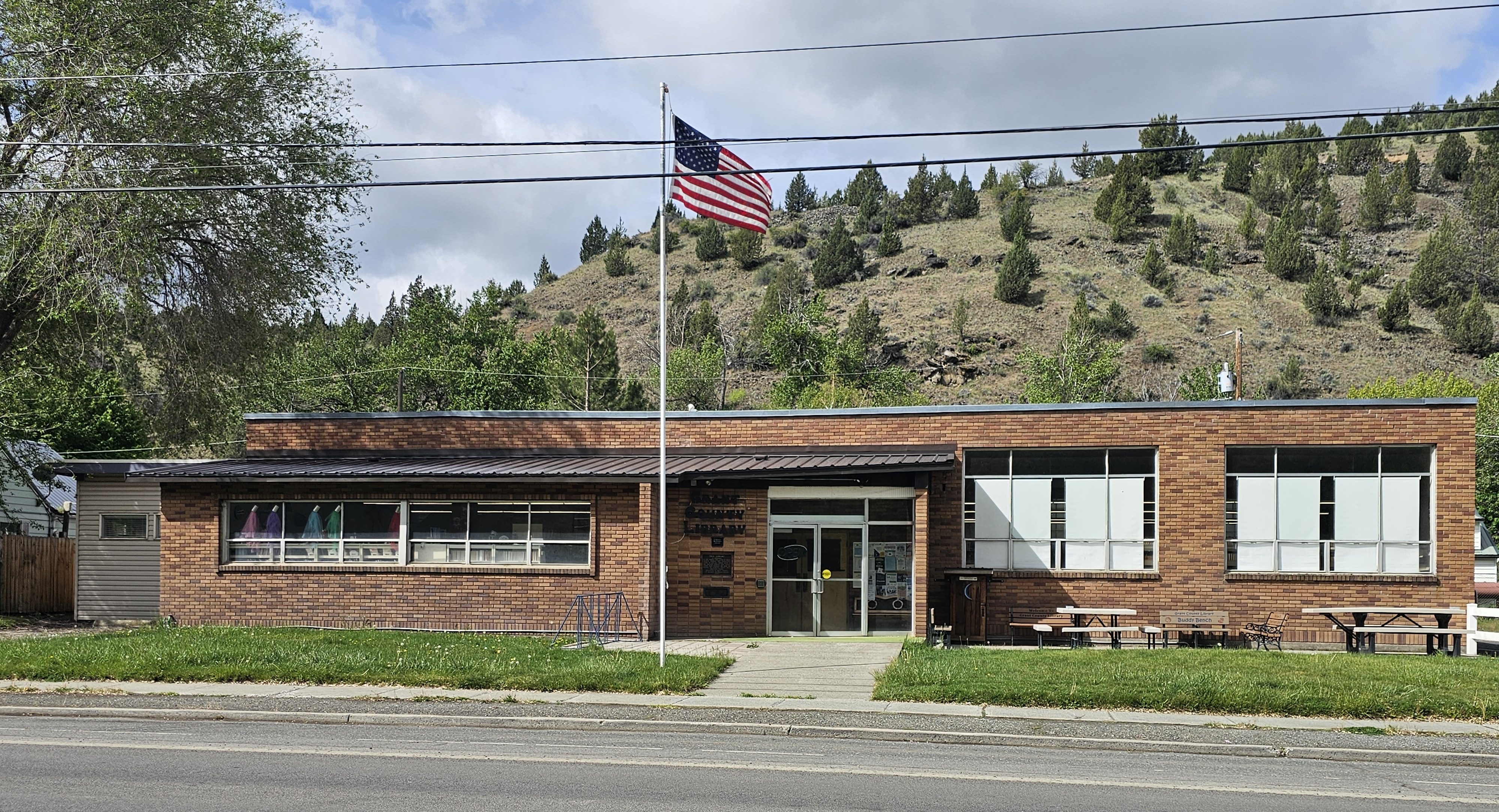Oregon Supreme Court affirms state council’s approval of B2H power line
Published 9:47 am Thursday, March 9, 2023

- The setting sun silhouettes transmission lines in Boardman Feb. 3, 2022, near the possible future starting point for the proposed 290-mile Boardman to Hemingway transmission line.
BAKER CITY — The Oregon Supreme Court rejected arguments from opponents of the proposed Boardman to Hemingway power transmission line that a state siting council erred in approving the 290-mile project that crosses parts of Baker, Union, Umatilla, Morrow and Malheur counties.
Trending
The court’s decision, dated Thursday, March 9, affirms the September 2022 decision by the Oregon Energy Facility Siting Council.
That council granted Idaho Power Co., which is leading the project first proposed about 17 years ago, a site certificate. That permit allows the company to construct the power line, which Idaho Power officials contend would be a vital link to move electricity between the Pacific Northwest and the Intermountain West.
Idaho Power hopes to start building the transmission line in the second half of 2023.
Trending
The route, between Boardman and Hemingway, Idaho, would cross parts of the Grande Ronde, Baker and Durkee valleys.
Critics, including the Stop B2H Coalition, contend that the power line would cause a host of environmental problems, including increasing the risk of wildfires and contributing to the spread of noxious weeds.
Critics also have cited the visual impacts of the power line towers, some of which could stand 180 feet tall, as well as noise from the transmission lines.
The court considered appeals from the Stop B2H Coalition as well as Irene Gilbert, co-chair of the coalition, and Michael McAllister.
Anne Morrison, a La Grande attorney and Stop B2H member, also filed a legal brief, as did Gilbert.
Gilbert said in a phone interview on Friday morning, March 10, that although she’s disappointed with the court’s decision, “it isn’t a done deal.”
Gilbert said she believes B2H opponents might have opportunities to pursue legal challenges when Idaho Power seeks permission for the project through the Oregon Public Utility Commission.
“Stop B2H is not going away,” Gilbert said.
Morrison said in a phone interview Friday morning that she is “deeply disappointed but not really surprised by this outcome.”
Morrison said Oregon laws that govern the siting of transmission lines and other energy facilities were “created to benefit the industry. I don’t think they benefit the public.”
She believes the system in effect allows energy companies to “run” the Oregon Department of Energy. Morrison said companies such as Idaho Power contribute to the salaries of state employees involved in the process.
“That’s a crazy conflict of interest,” Morrison said.
Among the issues that the petitioners raised, and the state Supreme Court analyzed:
Transmission line noise
In their ruling, the justices note that occasionally noise from the line would exceed limits set in a state administrative rule.
Stop B2H Coalition argued that only the state Department of Environmental Quality (DEQ) can grant exceptions, and only the state Environmental Quality Commission (EQC) can approve variances.
The state Supreme Court concluded that because those two state agencies have “made it clear by rule” that neither would address exceptions or variances to noise standards, it would be “futile” for the siting council to have asked the agencies to address the issue regarding B2H.
Visual impacts
Stop B2H Coalition argued that Idaho Power’s method for assessing whether the visual effects of the power line were significant, under state rules, was flawed because it didn’t consider viewers’ subjective perceptions.
The justices concluded that “nothing in the rule required Idaho Power to utilize a particular methodology or specifically account for subjective perceptions and reactions in assessing whether the transmission line would be likely to result in ‘significant adverse visual impacts’ to scenic resources. Moreover, as explained in the final order, the methodology used to assess the visual impacts of the transmission line did take viewers’ subjective perceptions into account.”
Assessment effects on historic sites
Gilbert, in her appeal, argued that the siting council abused its discretion by deferring the survey of some properties, for potential effects on historic sites, to the Oregon Department of Energy (ODOE) rather than doing those surveys before issuing the site certificate last September.
The Supreme Court justices disagreed, writing that the siting council “had statutory authority to delegate that assessment to ODOE for future review. We find no abuse of discretion under those circumstances.”









